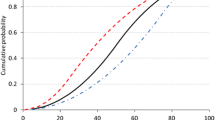Abstract
Cloudy skies reduce image quality obtained from unmanned aerial vehicles (UAV) due to variable lighting conditions imposed on the surface. This study provides a novel approach for identifying temporal windows of opportunity that show promise for avoiding such reductions. The total available hours for flight within a growing season were determined based on an hourly assessment of sky condition. In the study region, this represents total hours from 9 AM to 3 PM, March 1 through September 30. The most promising windows were early and late season, and early morning and late afternoon. Monthly windows were well aligned with crop decision making for emergence. An economic case study was conducted to determine the impact of sky condition on per hectare custom rate for agricultural applications of UAV. Both full-season and early-season-only operational scenarios were investigated. Use of UAV was financially favorable despite the frequent presence of poor sky conditions thought to reduce image quality (60% of total hours). A custom rate of < US$3.65 ha−1 for three flights accommodated a range of acceptable returns on investment over a 3 year period. Poor sky conditions increased the average custom rate by at most US$0.89 ha−1 in the early-season-only scenario and US$0.77 ha−1 over the full season. These rates are competitive with manned aircraft for average fields in the study region (80 ha). Although the initial perception was that clouds would reduce the potential for UAV operations when high image quality is required, economic analyses did not support this preliminary assumption.







Similar content being viewed by others
Data availability
The datasets generated and analyzed during the current study are available from the Mississippi State University Libraries Institutional Repository as Czarnecki et al. (2021).
Notes
Costs for goods and services were based on published pricing at the time the study commenced and may have changed. All prices are in USD.
This survey was conducted in summer 2021 and represents information accurate at the time of collection.
Agronomically speaking, for effective weed management all providers should be focusing on the early season, but this was not apparent in the marketing materials.
References
Arroyo-Mora, J. P., Kalacska, M., Løke, T., Schläpfer, D., Coops, N. C., Lucanus, O., & Leblanc, G. (2021). Assessing the impact of illumination on UAV pushbroom hyperspectral imagery collected under various cloud cover conditions. Remote Sensing of Environment, 258, 112396. https://doi.org/10.1016/j.rse.2021.112396.
Chauhan, S., Darvishzadeh, R., Boschetti, M., Pepe, M., & Nelson, A. (2019). Remote sensing-based crop lodging assessment: Current status and perspectives. ISPRS Journal of Photogrammetry and Remote Sensing, 151, 124–140. https://doi.org/10.1016/j.isprsjprs.2019.03.005.
Czarnecki, J., Samiappan, S., Wasson, L. L., & McCraine, C. D. (2021). Mississippi sky conditions. Mississippi State University Libraries Institutional Repository. https://scholarsjunction.msstate.edu/cals-publications/27/
Dadhwal, V., & Ray, S. (2000). Crop assessment using remote sensing-part II: Crop condition and yield assessment. Indian Journal of Agricultural Economics, 55, 55–67.
Eberhardt, I. D. R., Schultz, B., Rizzi, R., Sanches, I. D., Formaggio, A. R., Atzberger, C., Mello, M. P., Immitzer, M., Trabaquini, K., Foschiera, W., & Luiz, A. J. B. (2016). Cloud cover assessment for operational crop monitoring systems in tropical areas. Remote Sensing, 8(3), 219. https://doi.org/10.3390/rs8030219
Ju, J., & Roy, D. P. (2008). The availability of cloud-free landsat ETM + data over the conterminous United States and globally. Remote Sensing of Environment, 112(3), 1196–1211. https://doi.org/10.1016/j.rse.2007.08.011.
Kasampalis, D. A., Alexandridis, T. K., Deva, C., Challinor, A., Moshou, D., & Zalidis, G. (2018). Contribution of remote sensing on crop models: A review. Journal of Imaging, 4(4), 52. https://doi.org/10.3390/jimaging4040052.
Khofiyah, N. A., Hisjam, M., & Sutopo, W. (2021). Techno-economic feasibility analysis of agricultural drone business in Indonesia. In Proceedings of the second Asia Pacific international conference on industrial engineering and operations management (pp. 4236–4247). IEOM Society International.
Koo, T. K., & Li, M. Y. (2016). A guideline of selecting and reporting intraclass correlation coefficients for reliability research. Journal of Chiropractic Medicine, 15(2), 155–163.
McGraw, K. O., & Wong, S. P. (1996). Forming inferences about some intraclass correlation coefficients. Psychological Methods, 1(1), 30.
Moss, C. B. (2013). Agricultural Finance. Routledge.
Ozdogan, M., Yang, Y., Allez, G., & Cervantes, C. (2010). Remote sensing of irrigated agriculture: Opportunities and challenges. Remote Sensing, 2(9), 2274–2304. https://doi.org/10.3390/rs2092274.
Thorp, K., & Tian, L. (2004). A review on remote sensing of weeds in agriculture. Precision Agriculture, 5(5), 477–508. https://doi.org/10.1007/s11119-004-5321-1.
Walter, S., Eliasziw, M., & Donner, A. (1998). Sample size and optimal designs for reliability studies. Statistics in Medicine, 17(1), 101–110.
Funding
This publication is a contribution of the Mississippi Agricultural and Forestry Experiment Station. This material is based upon work that is supported by the National Institute of Food and Agriculture, U.S. Department of Agriculture, Hatch project under accession number 721150.
Author information
Authors and Affiliations
Contributions
JC: conceptualization, methodology, validation, formal analysis, investigation, data curation, writing—original draft, visualization, project administration, funding acquisition.
Corresponding author
Ethics declarations
Competing interest
The authors have no relevant financial or non-financial interests to disclose.
Additional information
Publisher’s Note
Springer nature remains neutral with regard to jurisdictional claims in published maps and institutional affiliations.
Rights and permissions
Springer Nature or its licensor (e.g. a society or other partner) holds exclusive rights to this article under a publishing agreement with the author(s) or other rightsholder(s); author self-archiving of the accepted manuscript version of this article is solely governed by the terms of such publishing agreement and applicable law.
About this article
Cite this article
Prince Czarnecki, J.M., Shockley, J.M., Wasson, L. et al. Estimation of the economic impacts and operational limitations imposed on unmanned aerial systems by poor sky conditions. Precision Agric 24, 2607–2619 (2023). https://doi.org/10.1007/s11119-023-10055-3
Accepted:
Published:
Issue Date:
DOI: https://doi.org/10.1007/s11119-023-10055-3




